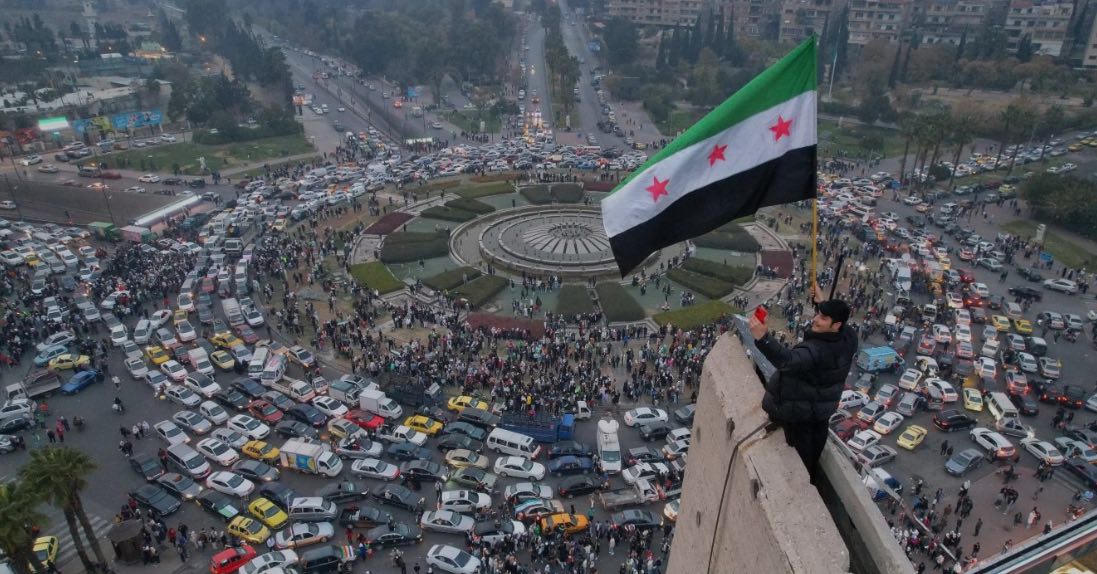What will be the future of Syria’s political system?
What will be the future of Syria’s political system?
The focus and numerous analyses are centered on the future of Syria and its governing system after the fall of Bashar al-Assad.
The future of Syria is not limited to internal political affairs and cannot be confined to the consequences of the regime’s collapse and the initial consensus among internal actors to achieve a goal.
The success of Syria’s political system is more related to a set of requirements and considerations of regional and international internal actors that must be considered in light of the transitional phase and what will ultimately be created.
Among the most important of these considerations are international consensus, government control of weapons, concentration of power, management of the transitional period, and achieving social convergence. It seems the future of Syria is exposed to several scenarios, all of which are associated with a series of challenges, actors, and requirements.
The interaction of these factors will shape the model and form of the country’s future political system. These scenarios can be summarized as follows:
The first scenario: a Taliban-style government system in Afghanistan.
This scenario assumes that Tahrir al-Sham, initially founded on a Salafi jihadist ideology when known as Jabhat al-Nusra, may follow a government similar to that implemented by the Taliban in Afghanistan.
There are similarities between the contexts of control and ideological features of both cases. This scenario is depicted by Tahrir al-Sham and other aligned forces moving towards shaping the country’s future as a unified state with stronger centralization. This could lead to Ahmad al-Shara’a, the leader of HTS, becoming the future president of Syria, and members of this group forming the core of Syria’s future army.
A government system based on Sharia law will be established, with Islamist forces taking control and drafting a constitution reflecting Islamic values. This scenario requires these forces to control minority areas, especially Alawite regions and areas under Kurdish control.
The second scenario: the political system model in Iraq.
This model assumes the formation of two governments in a unified Syria: one central government in Damascus and another Kurdish self-administration in the northeast. The former will be responsible for defense, foreign policy, and financial matters, while the latter will manage areas under Kurdish control in Syria, similar to Iraq, controlling part of the country’s oil and gas resources. According to this scenario, it is likely that the Kurds will maintain their armed forces like the Peshmerga.
Countries like Iran and Iraq may perceive the establishment of Kurdish autonomy as a threat, but it is supported by the United States, Israel, and possibly Russia. In this scenario, the future governance system in Syria will be federal, achieving a balance between the Damascus government and Kurdish areas.
This includes both local and federal elections. This model allows for the division of the country into regions with a degree of autonomy and provides authorities for managing affairs while maintaining the central government’s authority to address sovereign matters.
The third scenario: a security-focused confederal model.
This scenario assumes that the governing system in Syria will move towards the division of the country based on geographical, security, sectarian, and ethnic bases. There is still doubt among minorities, including Alawites, Druze, and Kurds, about the direction set by the forces controlling the scene. Each of these minorities has its armed factions.
Additionally, Alawite officers and leaders of the past regime have launched potential uprisings against the transitional power to disrupt its progress and create security and political challenges.
This means that Tahrir al-Sham faces serious challenges in implementing a centralized government across Syria, which, if realized, would be vulnerable to overwhelming and costly security incidents. This scenario emphasizes the geographical distribution of minorities, supported by foreign powers.
While Turkey supports the transitional government, the United States supports Kurdish self-governance in the northeast. Meanwhile, Russia, Iran, Hezbollah, and Iraq support the Alawites and remnants of the past regime, and Israel seeks to establish communication channels with the Druze community in Syria.
Overall, U.S. pressure tools, including economic sanctions and military presence in Syria, along with Damascus’s need for European and Arab investment and funding for reconstruction and development, compel the transitional power to consider the demands of these actors in shaping the future.
This governing system, especially considering the return of refugees, may face another form of pressure on authorities due to population growth and economic burden. These scenarios for the future of Syria’s political system and its possible forms require sustainable stability, which is considered a complex and significant challenge for the transitional government.
Managing the future outlook is accompanied by numerous sensitivities that could at any moment lead Syria to a state of chaos, power vacuum, and geographical, ethnic, and sectarian division. Despite an implicit regional and international consensus on the necessity of establishing stability in Syria, the risks associated with the power transition process may bring multiple consequences and warnings, particularly regarding tactical agreements between armed and political forces in Syria that have not yet reached a strategic integration level in terms of goals and institutional structure.

